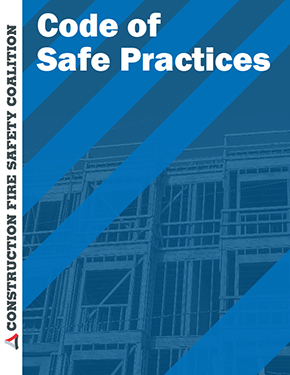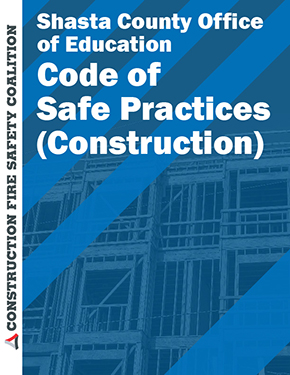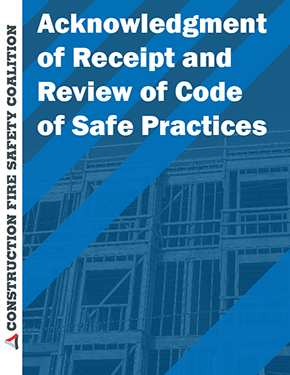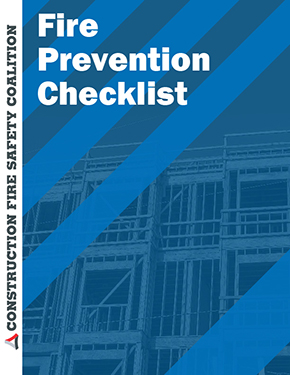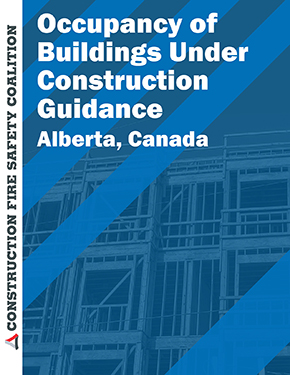The first building code was written by Hammurabi about 1754 BC. The concept of the modern building code probably emerged right after the turn of the century in 1900. Today all organizations involved with building systems recognize the need for modern up-to-date building codes to address the design and installation of building systems. Fire safety is one of the most serious considerations. There are safety precautions that must be taken during construction that are different than the criterion once a building is occupied. The emphasis of this website is on the use of fire and building codes to construct fire safe buildings.
- Model codes and standard provisions – There are a number of fire codes and standards that identify proper fire prevention precautions. Each state has a separate and distinct responsibility to adopt their own code. Generally these codes are developed at the national level and administered by the state in accordance with state law. There are two types of state adoption processes. Some states adopt the code as a minimum and a maximum for all jurisdictions; other states have a local ability to control and modify the codes.
- NFPA 1 – This standard is the National Fire Protections fire code. The code contains 75 chapters of requirements including Section 16.1, which sets the requirements for safeguarding construction, alternation and demolition operations. Please see NFPA.org.
- NFPA 5000 – This standard is the NFPSA building code. This code contains 55 chapters of requirements, including Chapters 14 and 15 which sets the requirements for preventing fires during construction. Please see NFPA.org.
- International Building Code description – This is a building code produced by the International Code Council and has been in effect since 1997. Chapter 33 (2003 ed.) describes safeguards during construction. See ICCSafe.org.
- International Fire Code description – This is a fire code produced by the International Code Council and has been in effect since 2000. This code represents the consolidation of three previous organizations. Chapter 14 describes safeguards during construction. See ICCSafe.org.
- NFPA 241- this standard is for the safeguarding of construction, alteration and demolition operations. As early as 1930 there were recommended good fire safe practices for building construction. The NFPA has issued numerous editions of this document and is designed to prescribe minimum safeguards of construction, alternation and demolition. Its adoption and enforcement is a best management practice to provide responsible safety to life and property from fire. Please see NFPA.org.
- NFPA 1620 – This standard is for the purpose of conducting pre fire planning for fire department operations. It was originally created in 1987. The NFPA has issued numerous editions of this document. It is designed to prescribe criteria for developing pre-incident plans for use by personnel responding to emergencies. Please see NFPA.org.
- Governmental regulations and guidance. One of the best resources from the federal government is the Occupational Safety and Health Administration (OSHA) Check out the following documents:
- Plastics Plumbing Features
- Preparing and Protecting Security Personnel in Emergencies
- Fire Service Features of Buildings and Fire Protection Systems
- Adopting a Code of Safe Practices is another element of assuring a fire safe work place. OSHA suggests that the Construction Industry develop a Code of Safe Practices based upon their analysis of hazards in the workplace. Employers should ensure that all employees are made aware of and follow these safe practices.
- Preparing a Fire PlanOne of the most important documents that needs to be produced as part of preventing fires is the builder’s fire plan. It is the building owner’s responsibility to develop this plan. During the construction phrase, a building is at its most vulnerable state. A Construction Fire Safety Plan (CFSP) is intended to address the issues that emerge while the building is not completed. Each construction site will have site-specific issues that will need to be addressed. The plan must address safety issues within the construction site, such as construction materials, chemicals, fire hazards, and construction procedures, as well as the impact of the construction on the surrounding area, including traffic flow, parking, street closures, utility turnoffs, pedestrian crossings, and safety signage, etc.
